"건축의 목적은 공간을 만드는 것이 아니라 인간의 영혼을 위한 장소를 창조하는 것이다." — 루이스 칸(Louis Kahn)

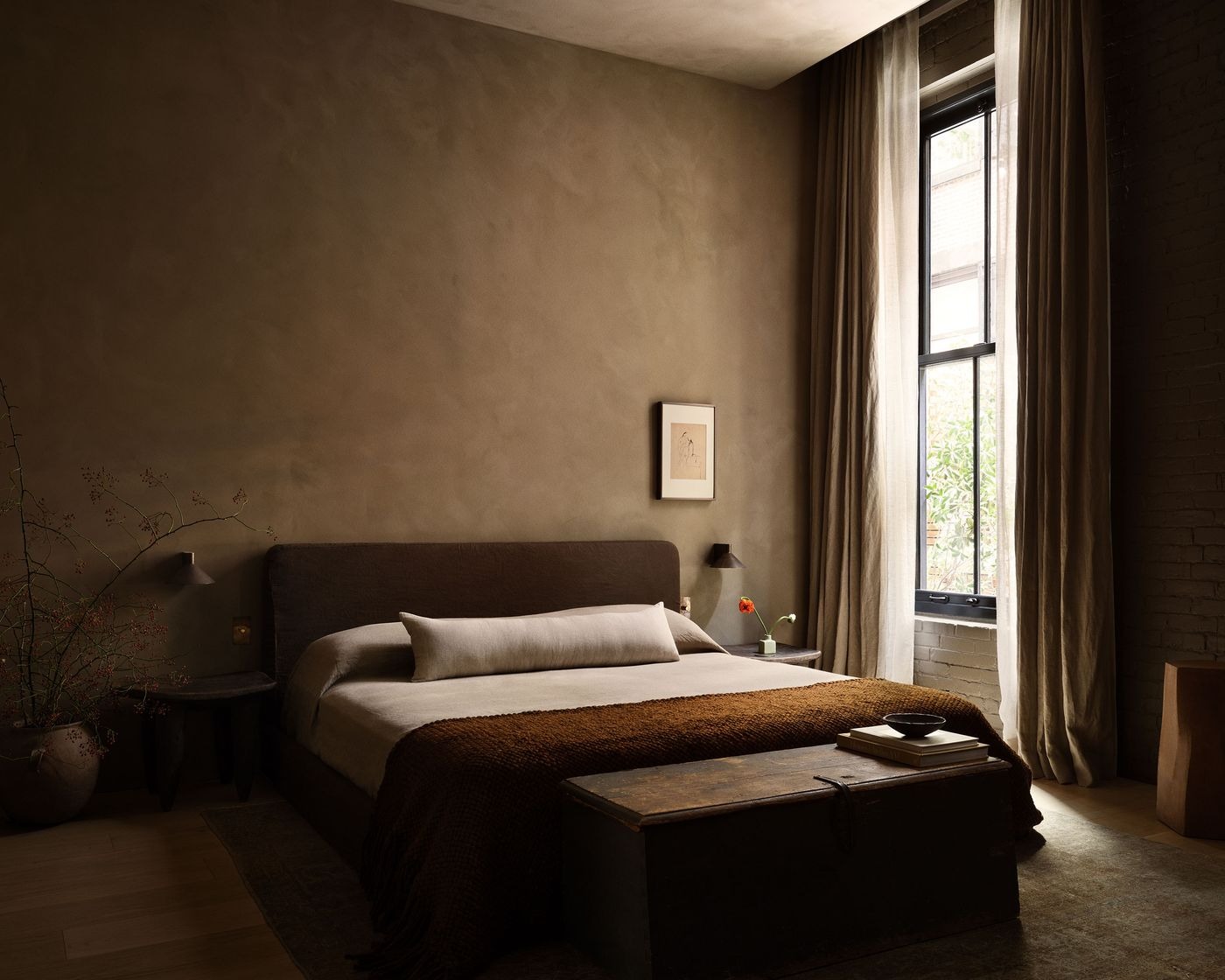 |
 |
 |
사막의 정신, 도시에 깃들다 Ember Studio-Desert Reveries in SoHo
Ember Studio가 SoHo 로프트에서 구현한 Amangiri의 영혼
프롤로그: 작은 인연에서 시작된 공간 여행
몇 해 전, 뉴욕과 오스틴을 오가며 활동하는 Ember Studio의 창립자 스테파니 베테시(Stephanie Betesh)가 지인 부부에게 건넨 소박한 수채화 한 장. 그 작은 선물이 280제곱미터 규모의 뉴욕 소호(SoHo) 로프트 리노베이션이라는 창작 여정의 출발점이 되리라고는 아무도 예상하지 못했을 것이다.
그 수채화는 훗날 부부가 유타주 사막 성소 아만지리(Amangiri)에서 올린 결혼식 초대장을 장식했다. 이들이 크로스비 스트리트(Crosby Street) 아파트를 구입하고 공간의 변화가 필요할 때 자연스럽게 베테시를 찾은 이유였다.
사막에서 도시로: 감정적 풍경의 이식
Ember Studio의 데뷔작이 된 이 주거공간은 붉은 바위 협곡과는 전혀 다른 환경에서 사막 리조트의 본질을 추출해냈다. 한국의 전통 건축에서 '차경(借景)'이라 불리는 개념처럼, 이곳의 고요함은 끝없는 지평선을 빌려오는 것이 아니라 재료와 장인정신, 그리고 비례의 세심한 조율이 만들어내는 또 다른 세계에서 온다.
바깥 소호 거리의 소란과는 완전히 격리된 이 공간은 마치 서울 북촌 한옥의 안마당처럼 도심 속에서도 고요함을 품는다. 아파트 레이아웃은 가족 공용공간을 극대화하면서도 주침실과 육아실의 사적 영역을 보장하도록 설계되었다.
진입: 의례적 통과의 건축학
입구의 좁은 복도가 전체 분위기를 예고한다. 베테시가 직접 선별한 재생목재로 제작한 높은 아치형 문들과 은은하게 조명된 벽감이 이 통로에 의례적 성격을 부여한다. 한국 전통 건축의 '중문(中門)' 개념처럼, 이곳은 단순한 통로가 아닌 공간 전환의 매개체 역할을 한다.
내장형 화분을 지나 짧은 계단을 오르면, 로프트의 심장부인 대형 공용 거실이 펼쳐진다. 그늘진 협곡에서 탁 트인 사막으로 나서는 순간처럼 극적인 공간 체험이다.
공용 영역: 빛과 재료의 교향악
오픈 키친과 다이닝, 거실로 구성된 이 공간은 자연 재료 팔레트를 기반으로 한다. 3.5미터 높이 연속창이 쏟아내는 자연광이 공간에 생명력을 불어넣는다. 이는 한국 현대 건축가 승효상이 즐겨 사용하는 '빈 공간의 충만함'과 맥을 같이 한다.
공간의 핵심은 흐름이다. 각각 135킬로그램에 달하는 맞춤 슬릿 목재 도어가 메인 거실과 서재 겸 게스트룸을 구분한다. 열리면 시각적으로 녹아들고, 닫히면 로프트의 흐름을 해치지 않으면서도 완벽한 프라이버시를 제공한다.
디테일의 시학: 보이지 않는 기술
여기서 베테시의 디테일 집착이 빛난다. 숨겨진 천장 레일 덕분에 거대한 문들이 공중에 떠 있는 듯 미끄러진다. 이는 일본 건축의 '쇼지(障子)' 문에서 영감을 받은 듯하다. 오크 선반 유닛을 접으면 방문객용 머피베드가 모습을 드러내는 것 역시 공간 효율성에 대한 한국적 사고와 맞닿아 있다.
겸손한 미니멀리즘: 한국적 절제미와의 만남
아만지리의 영혼 있는 미니멀리즘에서 영감을 받은 베테시의 인테리어에는 겸손함이 배어 있다. 화려함보다는 단순함으로 품격을 높이려는 의지는 한국 전통 미학의 '소박(素朴)'과 맥이 통한다.
화이트오크 목조마감재, 수작업 라임워시, 장인의 손길이 담긴 플라스터 마감이 로프트 고유의 웅장함을 부드럽게 감싼다. 아치형 출입구와 벽감에서 둥글게 마감된 선반 모서리까지, 원형의 반복이 공간에 리듬을 만든다.
시간을 초월하는 컬렉션: 절충적 조화의 미학
2년에 걸친 앤티크 페어와 독립 메이커들과의 협업으로 탄생한 가구와 세라믹, 아트워크 컬렉션은 트렌드를 거부하는 진정성을 보여준다. 이는 한국의 '고가구'와 현대 디자인을 조화시키는 최근 한국 인테리어 트렌드와도 맞닿아 있다.
다이닝 공간의 유카 스터프(Yucca Stuff) 조형 테이블은 드 푸이트(De Puydt)의 1960년대 빈티지 오크 체어, 에바 멘츠 아틀리에 001(Eva Menz Atelier 001)의 미니멀 브라스 펜던트와 조화를 이룬다.
사적 공간: 일상의 시적 완성
프라이빗 영역도 같은 철학을 이어간다. 육아실의 레베카 메이저(Rebecca Major) 수작업 벽화와 키안 샤베스타리(Kian Shabestari)가 액자에 담은 빈티지 압화는 조용한 동화적 매력을 연출한다.
주욕실에서는 문 그레이(Moon Grey) 라임스톤을 얹은 일체형 화이트오크 세면대가 촉감의 향연을 펼친다. 거친 할석 마감의 가장자리가 공간에 원시적 무게감을 부여하는 것은 한국 전통 석조 기법을 연상시킨다.
에필로그: 도시 속 명상의 공간
결국 베테시의 리노베이션은 단순한 아만지리 오마주를 넘어선다. 사막의 감정적 풍경을 완전히 다른 맥락으로 옮겨 심는다. 이 소호 로프트에서 고요함과 장인정신, 영혼 있는 단순함의 추구는 독특한 도시적 시정으로 승화되어 거주자들에게 하늘 위 고요한 성소를 선사한다.
이는 현대 한국 도시 주거의 새로운 가능성을 제시한다. 물리적 공간의 제약을 넘어 정신적 여유를 창조하는 건축의 힘을 보여주는 사례로 남을 것이다.
*이 프로젝트는 공간이 단순히 기능을 담는 그릇이 아니라 삶의 질을 결정하는 환경임을 다시 한번 확인시켜준다. 베테시의 손길을 통해 사막의 정신이 도시에 깃든 이 공간은 현대인들에게 진정한 의미의 '집'이 무엇인지 묻는다.*
Write by Claude & Jean Browwn



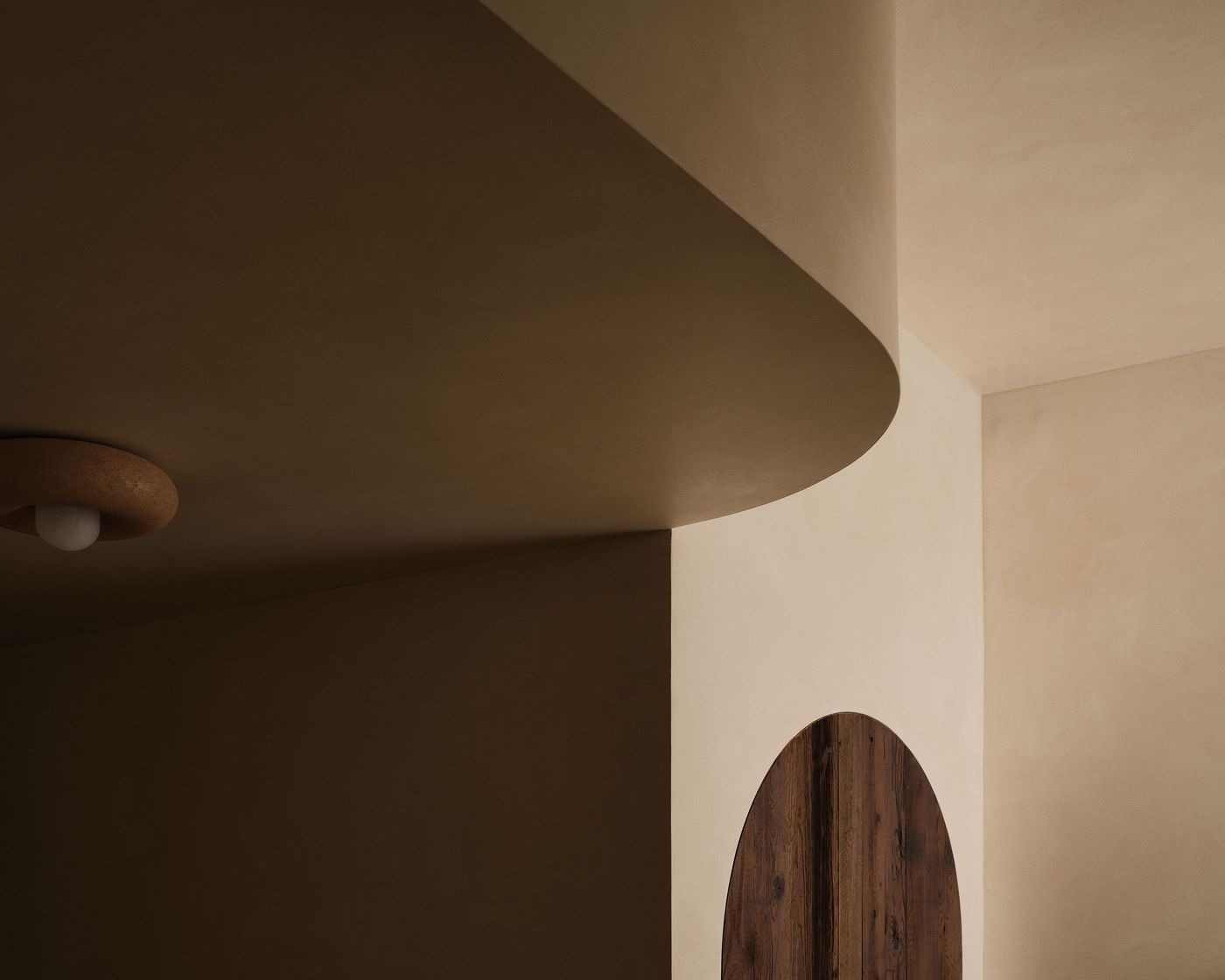





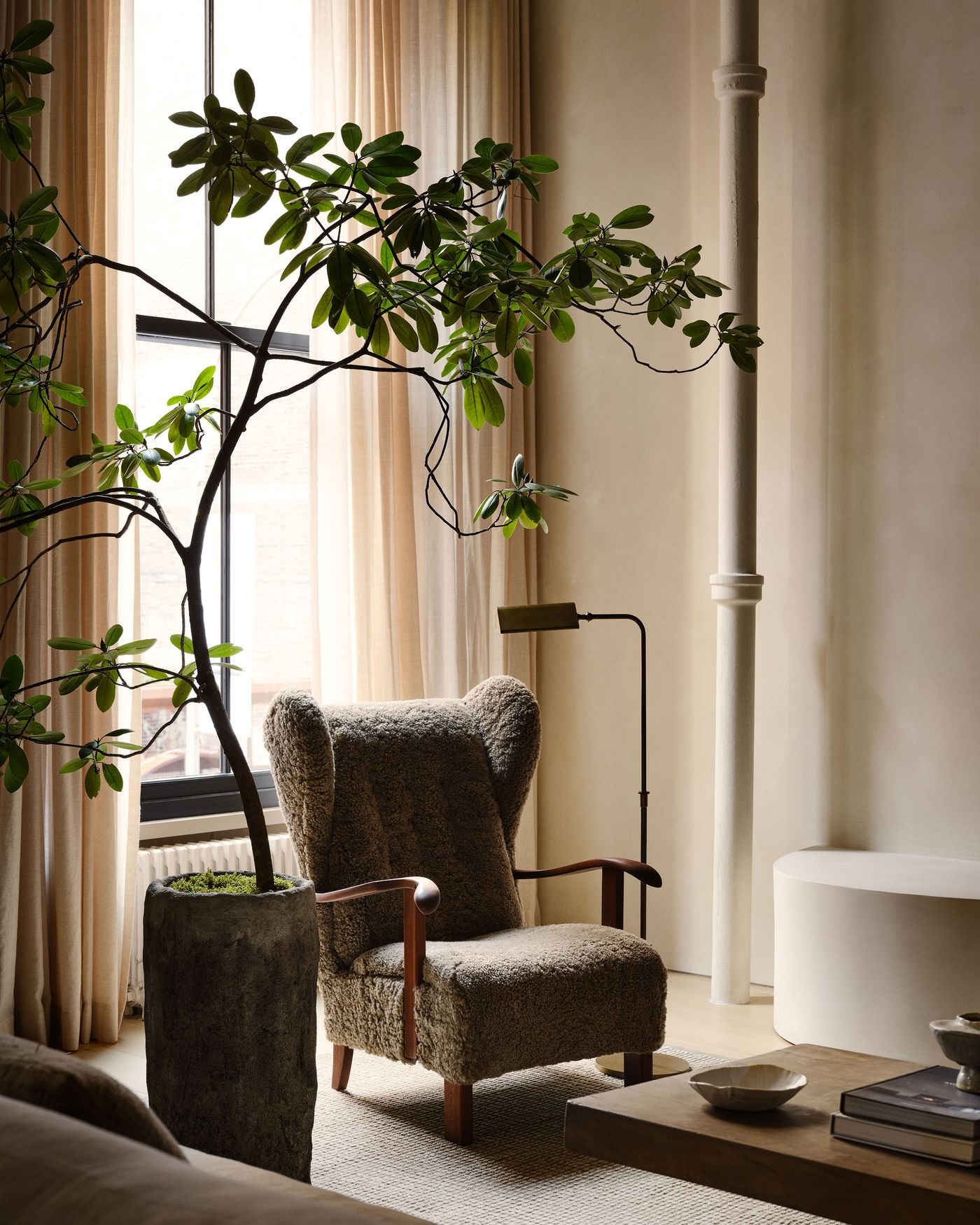






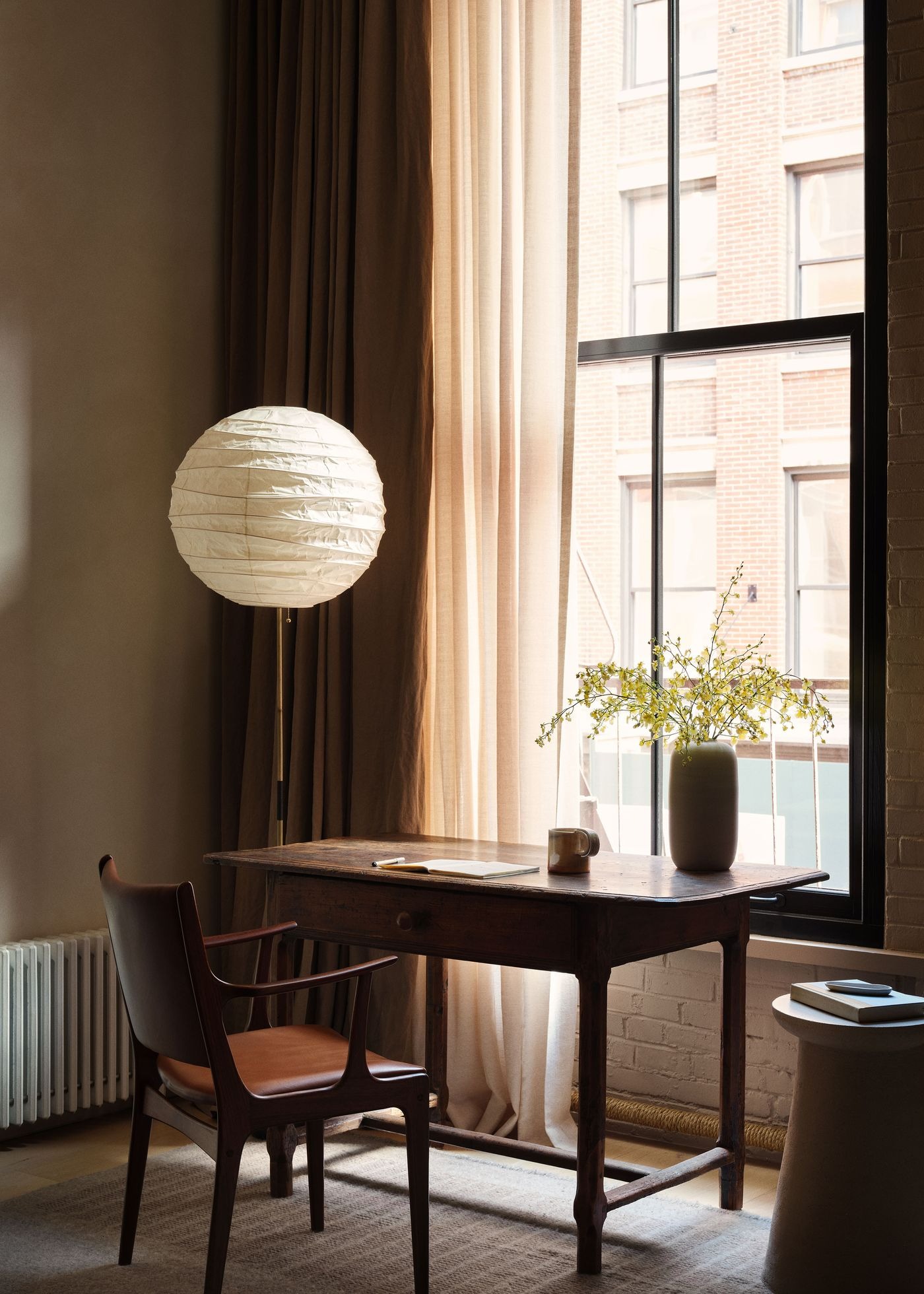







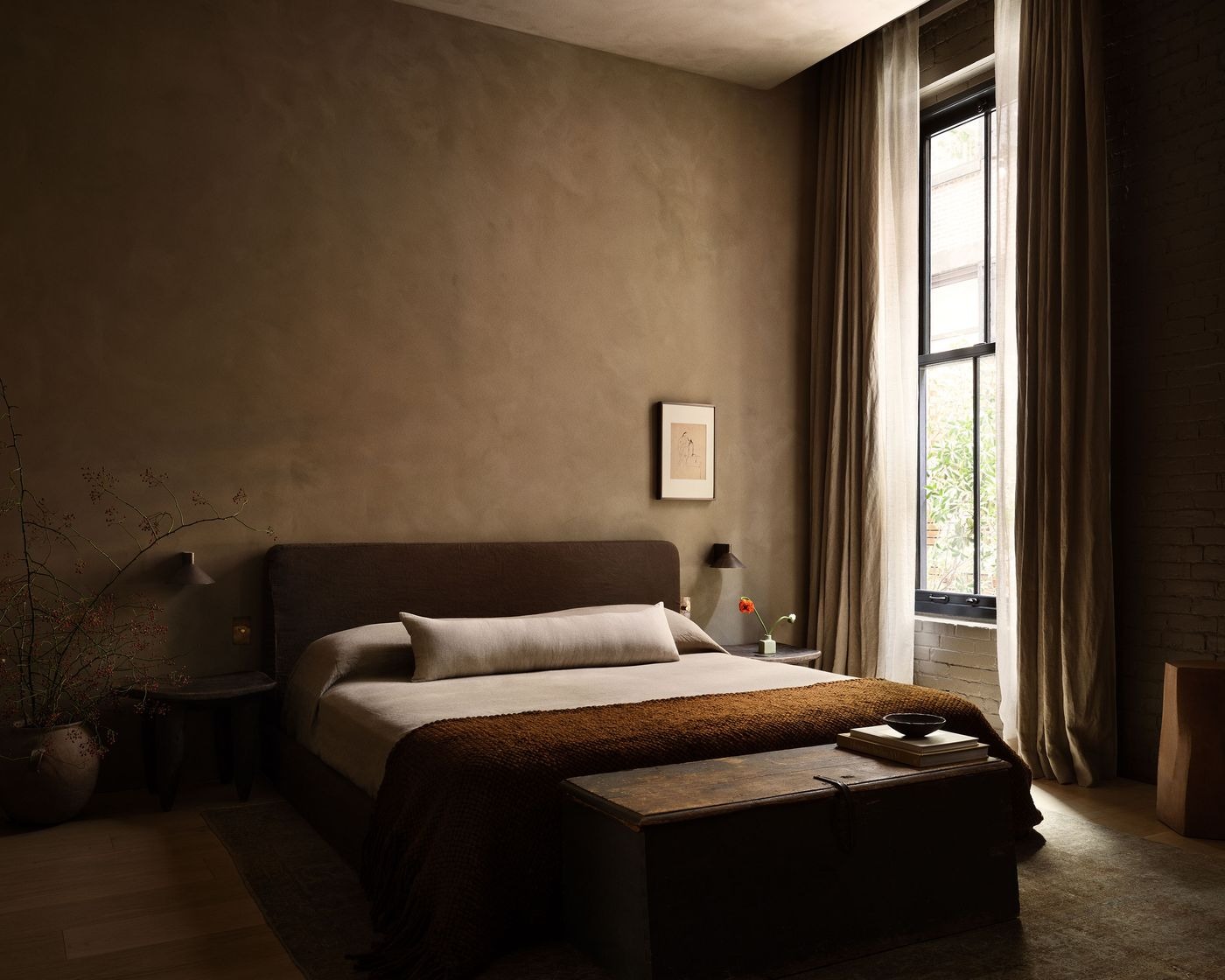







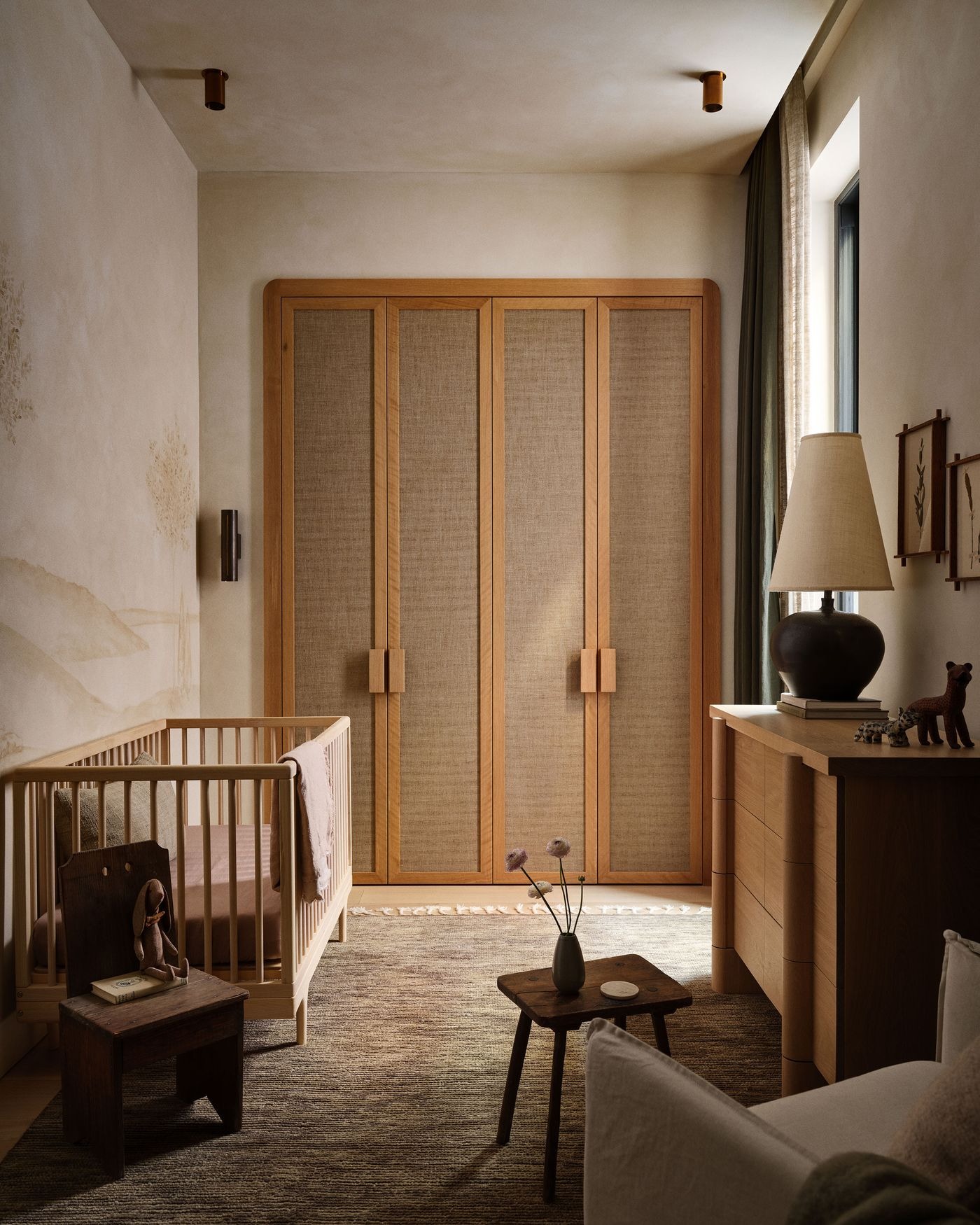
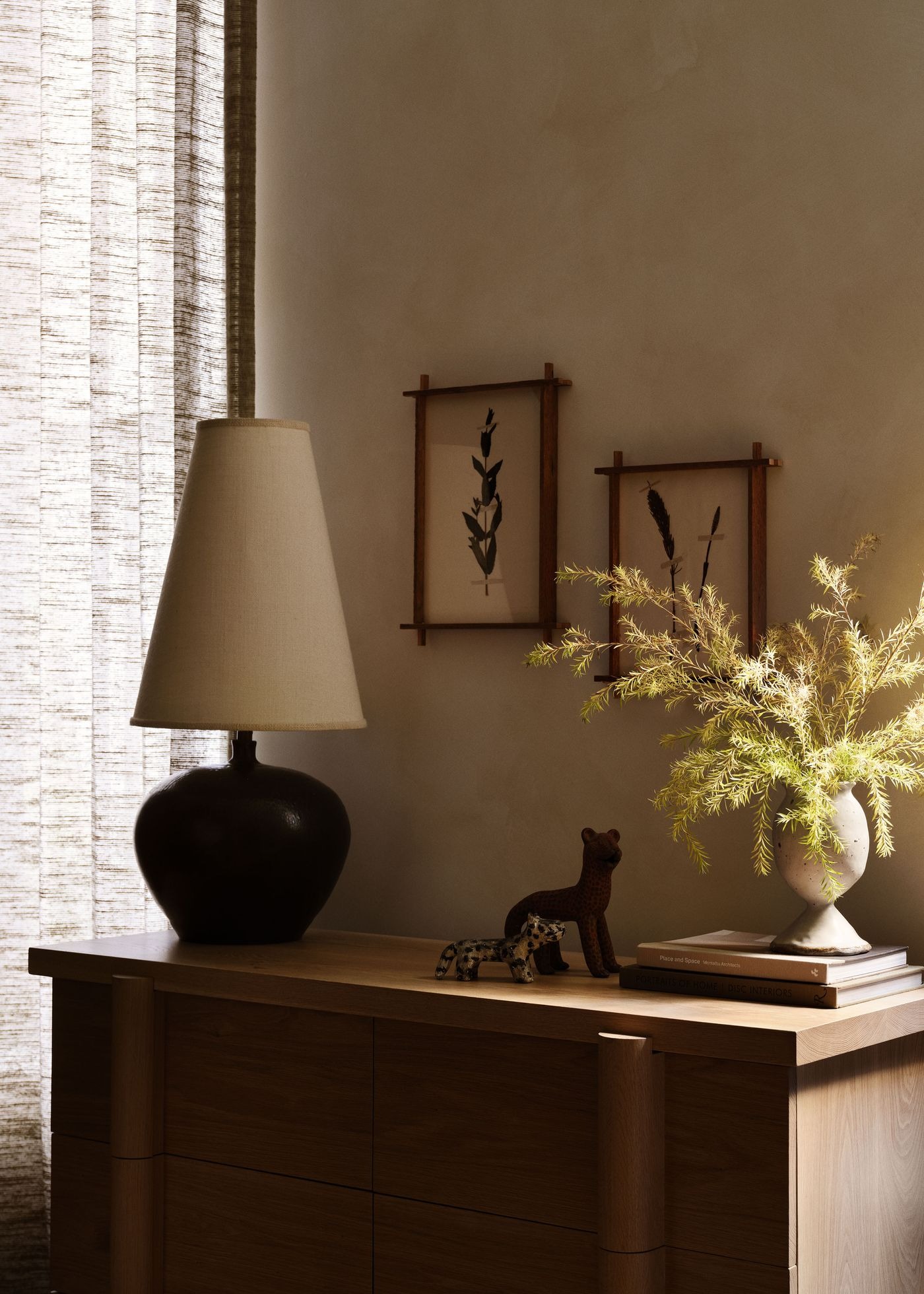

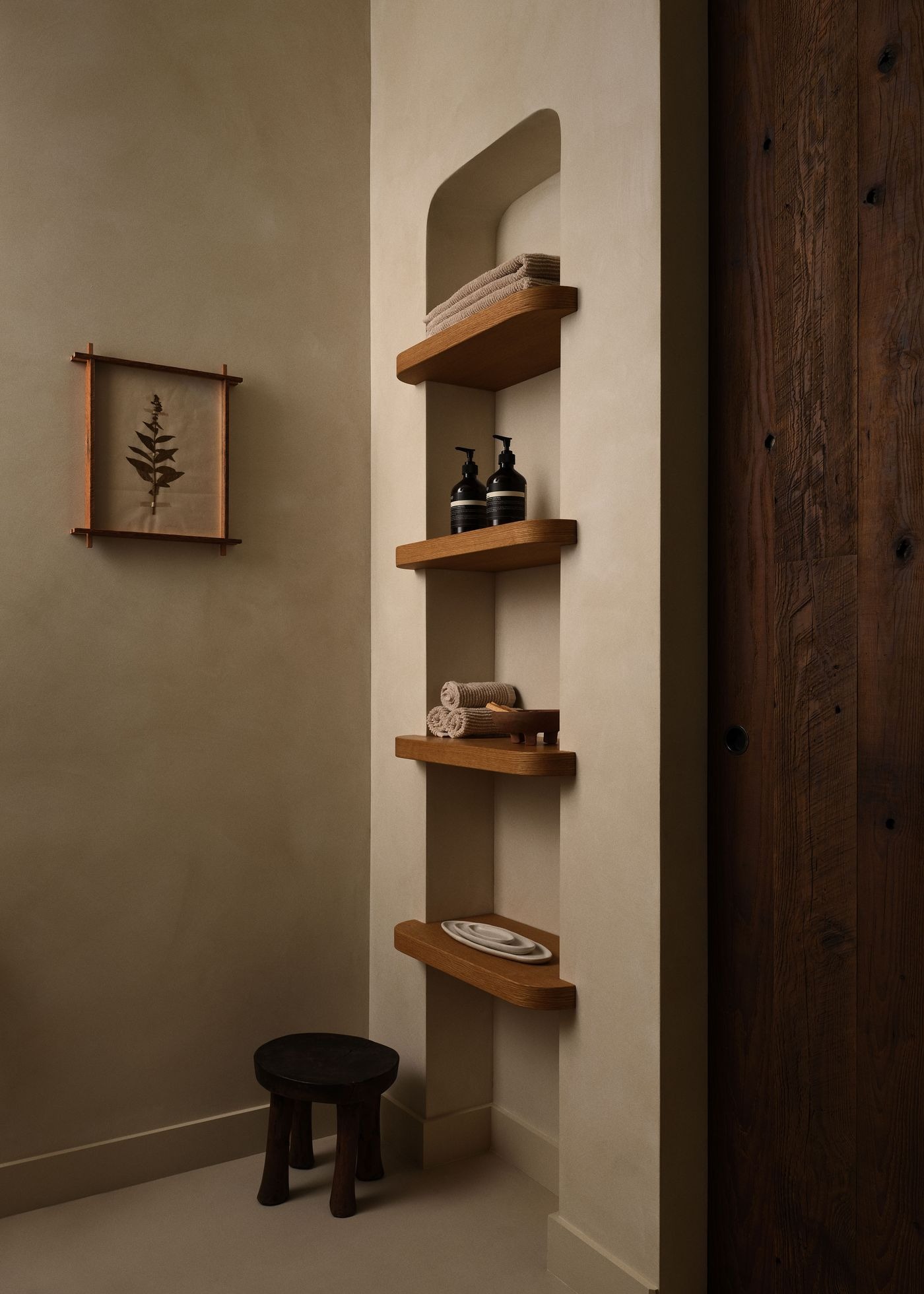
Desert Reveries in SoHo: Ember Studio Channels Amangiri’s Spirit in a Loft Renovation
When interior designer Stephanie Betesh, founder of New York- and Austin based Ember Studio, gifted a simple watercolour card to family friends a few years ago, she had no idea it would spark a creative relationship culminating in the renovation of a 280-square-metre loft in SoHo, New York. That watercolour would find its way into the couple’s wedding invitations for their ceremony at Amangiri, Aman Resorts’ desert sanctuary in Utah. So when they later purchased an apartment on Crosby Street and needed someone to reimagine it, they turned instinctively to Betesh.
The resulting home, Ember Studio’s debut project, distils the soul of the desert retreat into a setting far removed from the red rock canyons. Here, serenity comes not from vast, open horizons but from a meticulous orchestration of materiality, craftsmanship, and scale that almost create another world, far away from the bustling streets of SoHo just outside.
The apartment’s layout was designed to maximize communal family spaces while preserving a sense of retreat in the primary suite and nursery. Upon entry, a narrow corridor sets the tone; punctuated by towering arched doors crafted from reclaimed wood—each plank hand-selected by Betesh—and featuring a softly lit, altar like niche, the passage feels imbued with ceremony. Past a built-in planter and up a short flight of steps, the heart of the loft—a large communal living area—reveals itself, as if emerging from a shaded canyon into the open desert. Comprising an open kitchen, dining, and sitting area, the space is grounded by an earthy material palette and animated by a series of three-and-a-half-metre-high windows that flood it with natural light.
Spatial fluidity is key, as is flexibility. A series of custom slatted wood doors—each weighing 135 kilos separates the main living area from a study that doubles as a guest bedroom. When open, they visually dissolve into the backdrop; when closed, they offer true privacy without disrupting the loft’s flow. Here, Betesh’s obsession with detail is quietly compelling: hidden ceiling tracks allow the massive doors to glide as if floating, while an oak shelving unit folds down to reveal a Murphy bed for visiting guests.
Taking a page from Amangiri’s soulful minimalism, there’s a humility to Betesh’s interiors a desire to elevate through simplicity rather than spectacle. White oak millwork, hand-applied limewash, and artisanal plaster wall treatments soften the loft’s inherent grandeur, as does the repetition of round forms, from the arched doorways and niches to gently rounded shelf corners. While earthy hues and natural textures dominate throughout the apartment, yet Betesh’s touch never veers into the monastic. Instead, it is enriched by exquisitely crafted details, vintage finds, and an eclectic collection of objects that lend the space both polish and intimacy.
Gathered over two years through a mix of antique fairs and collaborations with independent makers, the eclectic collection of furniture, ceramics and artworks gives the home an authenticity that resists trends and time. In the dining area, for example, a sculptural table by Yucca Stuff is paired with vintage 1960s oak chairs by De Puydt and a minimalist brass pendant by Eva Menz’s Atelier 001. In the adjacent seating area, two vintage Amelia Tarbet lounge chairs and a Fritz Hansen armchair gather around a hand-carved wooden coffee table from Galerie Half.
The private areas extend this philosophy. In the nursery, a hand painted mural by Rebecca Major and vintage pressed flowers framed by Kian Shabestari create a quiet, storybook charm. In the powder room, a Turkish stone sink from LA’s Olive Ateliers is perfectly set into a charcoal-toned niche. Meanwhile, the primary bathroom celebrates tactility with a monolithic white oak vanity topped by Moon Grey limestone, its rough split-face edge introducing a primordial gravity that anchors the space.
In the end, Betesh’s renovation doesn’t merely reference Amangiri it transposes its emotional landscape to an entirely different context. In this SoHo loft, the pursuit of stillness, craftsmanship, and soulful simplicity takes on a distinctly urban poetry, offering its inhabitants a serene sanctuary in the sky.
from yatzer